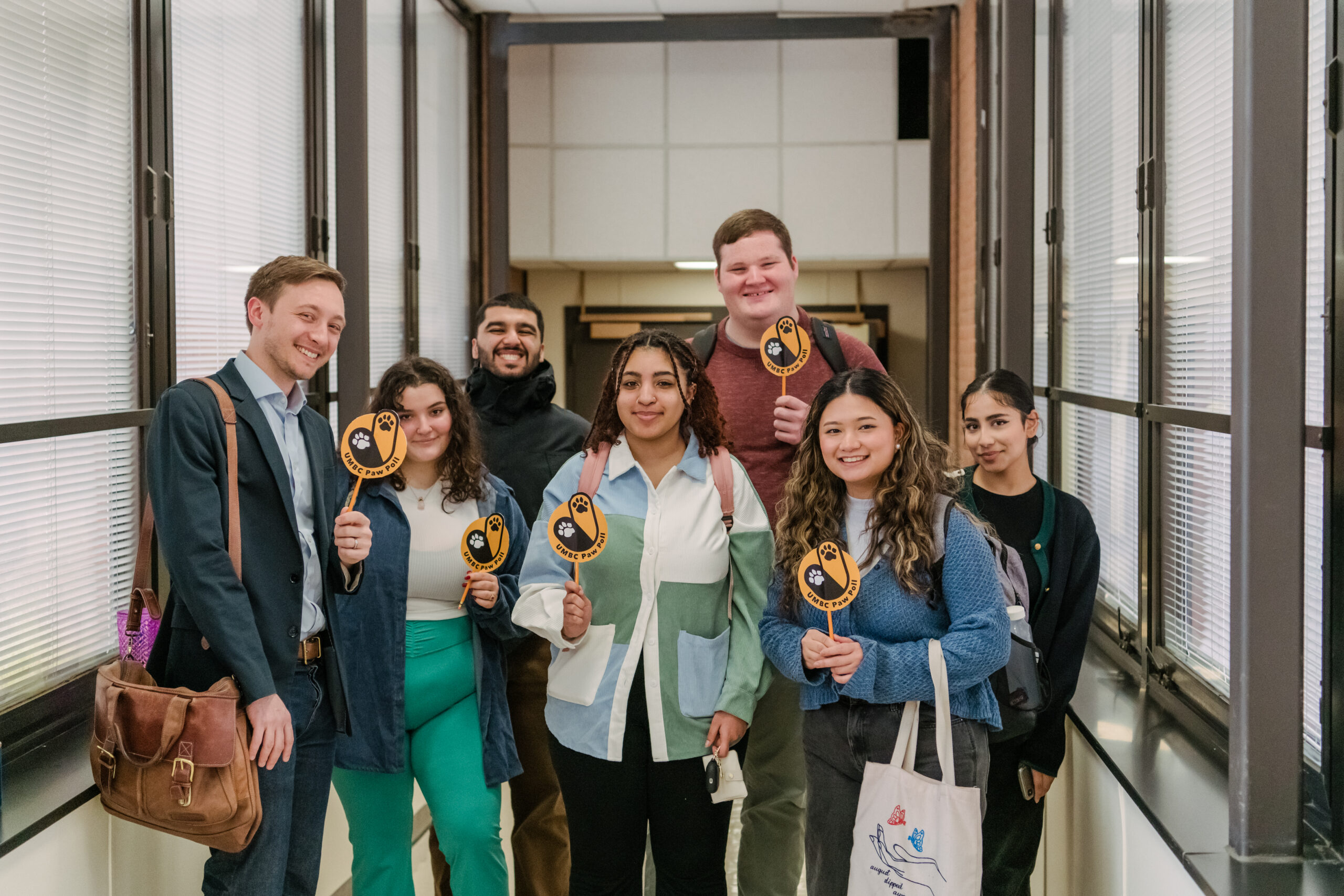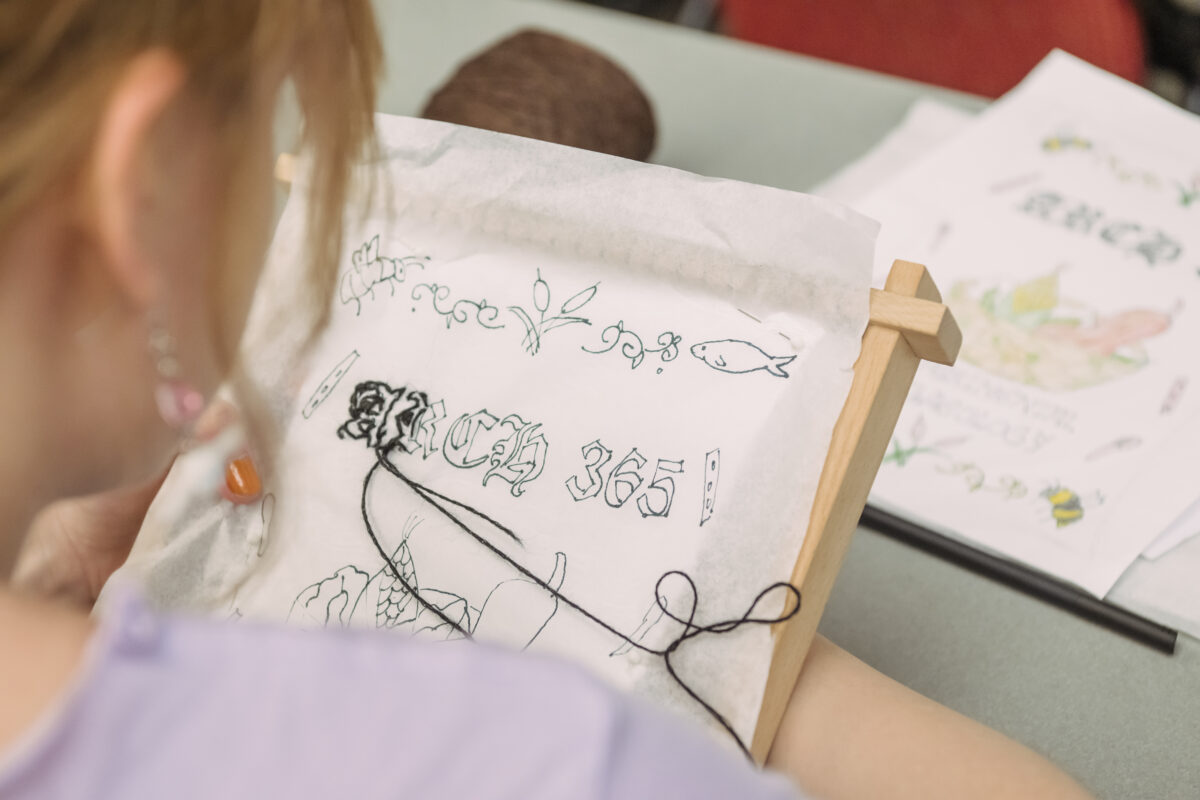During the November 2022 election, students in Ian Anson’s Public Opinion class had a unique opportunity to examine just how civically engaged UMBC students are, and they found the answers remarkable. The students designed and ran the first UMBC Paw Poll, a survey that gathered information about UMBC undergraduates’ voting behavior and voter registration status, as well as numerous other factors.
“My guiding philosophy is to create applied-learning projects that have legs—that go beyond the classroom context,” says Ian Anson, associate professor of political science. “I want students to experience how political science theories and applications impact communities—in this case, the UMBC community.”
The Paw Poll found UMBC undergraduate students exceed national averages along measures of civic engagement. “UMBC students are the future leaders of our democracy. The Paw Poll is statistical evidence that Retrievers’ civic engagement overwhelmingly outpaces other higher learning institutions in Maryland and beyond,” says Anson.
“Our students are fantastically thoughtful and understand the consequences of their actions for politics,” he reflects. “This is one of UMBC’s most important legacies.”
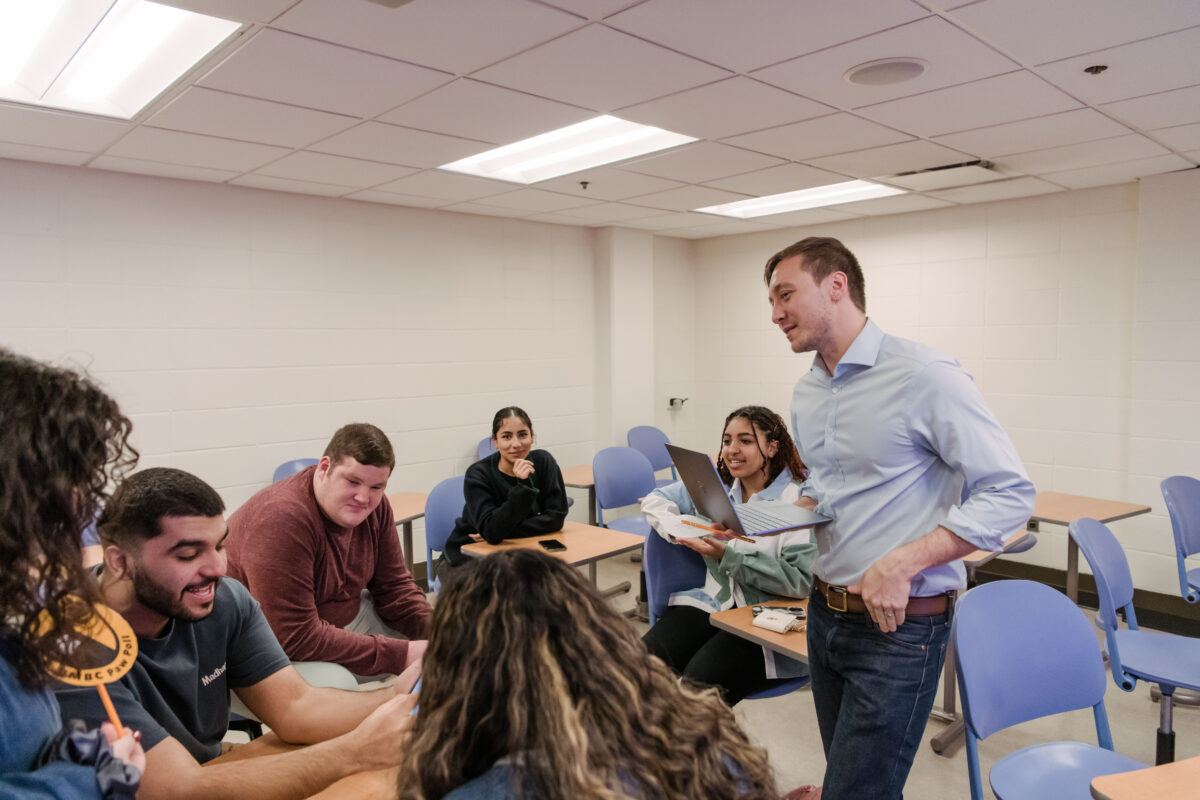
Exceeding national averages
Over 450 undergraduate Retrievers responded to the Paw Poll, a response rate of 15.9%. The survey data (available through the Paw Poll app) reveal that UMBC undergraduate students are highly engaged in the electoral process.
Anson’s Paw Poll report showed that in the 2022 general election (a midterm rather than presidential election year), UMBC registered voters participated at a rate of 53%. This rate is 13% higher than the Institute for Democracy and Higher Educations’ National Study of Learning, Voting, and Engagement (NSLVE) estimate for voting rates among all college students in the 2018 midterm election—the best available comparison. The NSLVE is the nation’s largest study of college and university student voting. It includes nearly 1,200 colleges and universities in all 50 states and the District of Columbia.
Voting in the 2020 presidential election was also higher among UMBC students than the national average of 66% provided by NSLVE. Among students who were at least 20 years old in November 2022 (therefore exceeding the minimum voting age of 18 years old in 2020), all age groups report having voted more often than the national average. Even the subgroup that was 18-19 in 2020 reports having voted at a rate of 78.9%, which is more than 12% higher than the national average. Again, the higher voting rate among UMBC students relative to the national average is statistically significant.
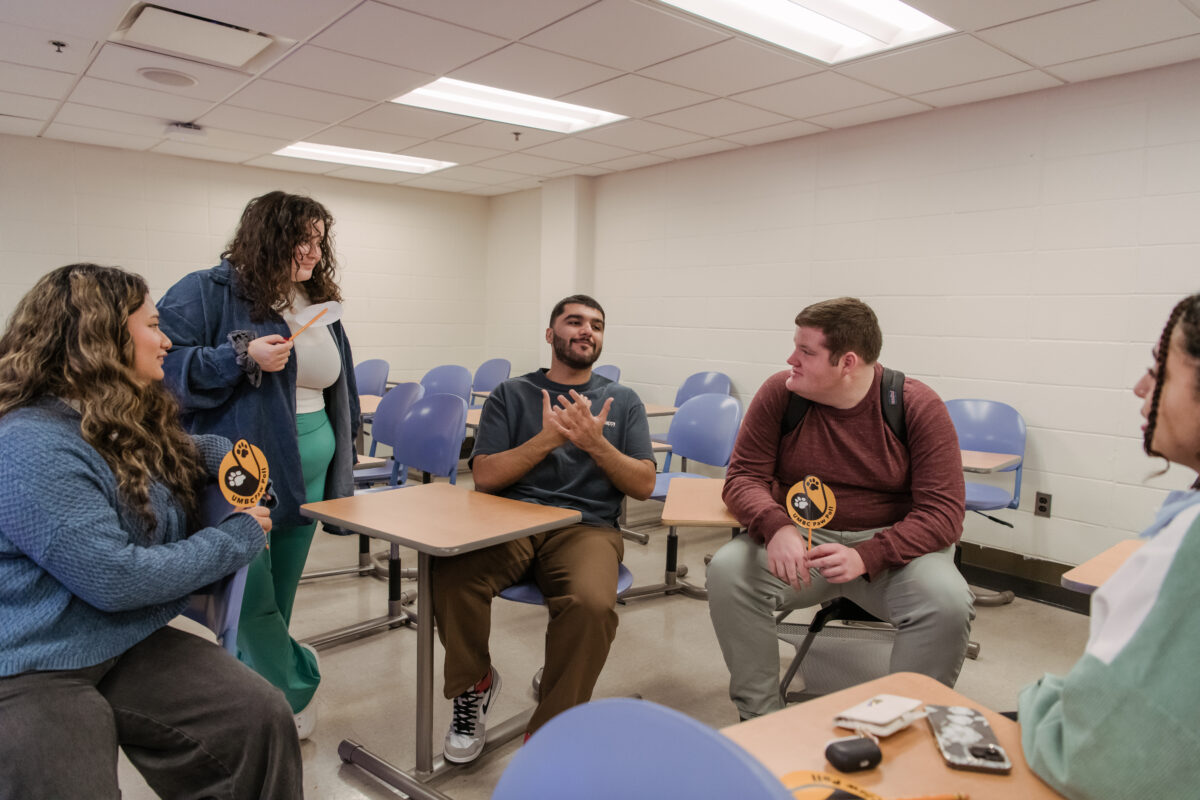
While the Paw Poll shows strong evidence of voter engagement among UMBC students, some groups had higher engagement rates than others. The poll used students’ major designation to distinguish them based on their College or School within UMBC. Registered undergraduates in the College of Engineering and Information Technology and the College of Natural and Mathematical Sciences showed lower rates of participation in the 2022 election than students in the College of Arts, Humanities and Social Sciences and social work programs, indicating an opportunity for greater engagement in the future.
The science of polling
Anson’s Public Opinion class immersed students in the process of exit polling for the first time in 2018. Students surveyed voters in person at Baltimore County voting sites. They logged and analyzed the data in real-time, leading the class to accurately call the race for former Governor Larry Hogan well before the official announcement. Anson wrote about the process in “Who are the Hogan Democrats? UMBC knows” for The Baltimore Sun.
Four years later, voting behaviors had changed dramatically due to COVID-19, with a sharp increase in mail-in ballots. Anson saw this as an opportunity to teach students how to pivot when circumstances change and how to work with a variety of partners to create something new. Together, Anson’s students, the political science department, the Center for Social Science Scholarship, and the Center for Democracy and Civic Life created the new virtual polling project.
Irene Otunla ‘23, political science and media and communication studies, a student in Anson’s Political Opinion class, enjoyed the multifaceted project. Otunla learned about the theories behind polling, how to design a poll item, the grammar of good survey questions, how to encode the responses into software, and how to analyze survey results. She was particularly excited to explore the relationship between believing that voting is a choice or a duty and traits like race, age, gender, and political affiliation.
“I hope UMBC is able to use the data to create more courses like this unique course,” says Otunla, “and find new ways of encouraging students and staff, outside of the political science department, to participate in voting or at least have a greater awareness of politics in general.”
Poised for leadership
The quest to understand student perspectives on civic engagement and to encourage greater levels of it continues among the Paw Poll partners. For example, David Hoffman, Ph.D. ’13, language, literacy, and culture, and the director of UMBC’s Center for Democracy and Civic Life, is working with intern Musa Jafri ’24, political science, and others to gain further insights that will inform future Center programming.
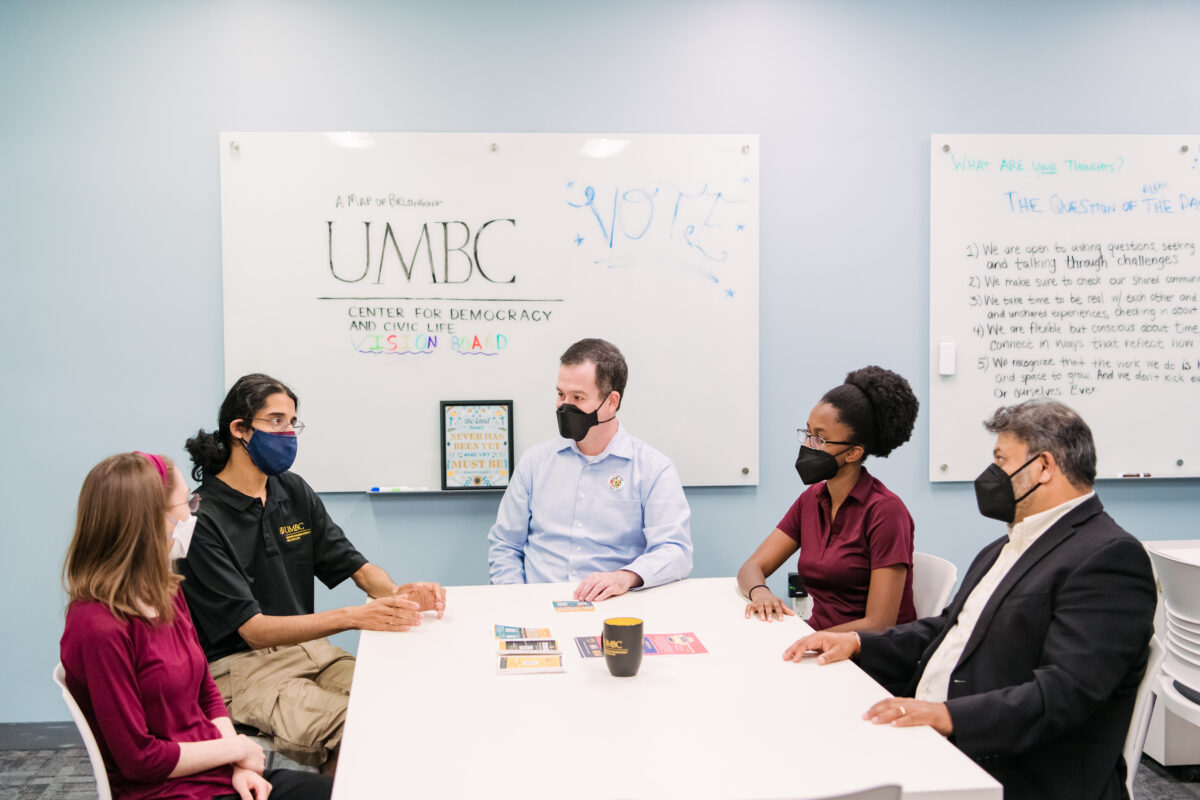
And the Paw Poll itself will likely continue to grow as well. “In future iterations of the Paw Poll, we hope to further examine the various forms of political activism and engagement that characterize the UMBC student body,” says Anson.
“For now,” he shares, “we remain optimistic that UMBC students are well equipped to become leaders in their communities and to remain engaged with the political process.”
Tags: CAHSS, cahssresearch, Center for Democracy and Civic Life, language literacy and culture, MCS, PoliticalScience, Research

